In recent years, remote work has become an increasingly popular and viable option for employees and employers. The COVID-19 pandemic accelerated the adoption of remote work, transforming it from a growing trend to a widely accepted work mode.
In 2023, remote work has continued to evolve, with new trends and statistics emerging to understand this better rapidly changing landscape.
In this article, we will delve into the top 50 remote work statistics and trends for 2023, highlighting the benefits, challenges, and future of remote work for businesses and employees worldwide.
Statistics on the Remote Work Revolution
The Remote Work Revolution has transformed the traditional office environment, breaking down geographical barriers and enabling employees to work from around the globe. As remote work continues gaining traction, it has redefined workplace dynamics, reshaping how businesses operate, and individuals interact with their jobs.
1. Accelerated Adoption of Remote Work due to the Pandemic
(Source: Gartner)
A recent Gartner survey found that 88% of organizations have mandated or encouraged remote work due to the pandemic. This shift to remote work has allowed organizations to continue operating during the pandemic and has allowed employees to work from anywhere at any time.
2. The shift in Long-term Remote Work Policies
(Source: PwC)
The shift to remote work brought about by the COVID-19 pandemic has catalyzed organizations to re-evaluate their traditional work models. A recent survey conducted by PwC found that 78% of CEOs believe that remote work is here to stay, with many organizations shifting to hybrid or fully remote work models.
3. Increase in Global Remote Workforce
(Source: Upwork)
The trend toward remote work is expected to continue growing in the coming years. A study by Upwork estimates that by the end of 2023, 25% of the global workforce will be working remotely. This represents a significant increase from the pre-pandemic levels, where remote work was seen as a privilege offered by only a few organizations.
4. Remote Work and Employee Retention
(Source: Owl Labs)
The benefits of remote work are not limited to just employees. According to a study by Owl Labs, companies that allow remote work have also been found to experience lower employee turnover. The study found that companies that allow remote work have 25% lower employee turnover than those that don’t.
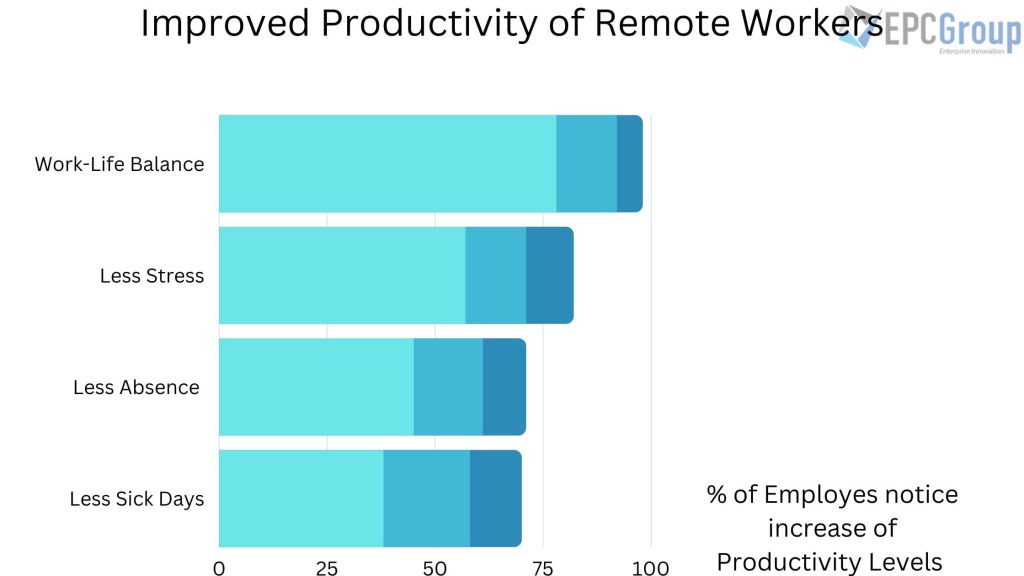
5. Improved Productivity of Remote Workers
(Source: Prodoscore)
The shift to remote work has not only benefited employees but has also been found to improve productivity levels. A study by Prodoscore revealed that remote workers’ productivity increased by 47% in 2023 compared to pre-pandemic levels.
6. Remote Work and Cost Savings
(Source: Global Workplace Analytics)
The shift to remote work has benefited employees and organizations and resulted in significant cost savings. According to Global Workplace Analytics, businesses can save an average of $11,000 per year for each employee that works remotely part-time.
7. Remote Work and Environmental Impact
(Source: FlexJobs, Global Workplace Analytics)
The shift to remote work not only has economic benefits but also has the potential to impact the environment significantly. FlexJobs and Global Workplace Analytics found that remote work could reduce greenhouse gas emissions by 54 million tons annually if half of the workforce worked remotely.
8. The Rise of Digital Nomads
(Source: MBO Partners)
The trend towards remote work is more expansive than just traditional employees. A growing number of people are embracing the digital nomad lifestyle, allowing them to work from anywhere in the world. MBO Partners State of Independence report predicts that the number of digital nomads in the U.S. will reach 10.9 million by 2024, reflecting a growing trend in location-independent remote work.
9. Remote Work and Mental Health
(Source: Buffer)
While remote work has many benefits, it can also have challenges, particularly regarding mental and emotional well-being. A survey by Buffer found that 80% of remote workers reported experiencing burnout, emphasizing the need for better work-life balance and mental health support.
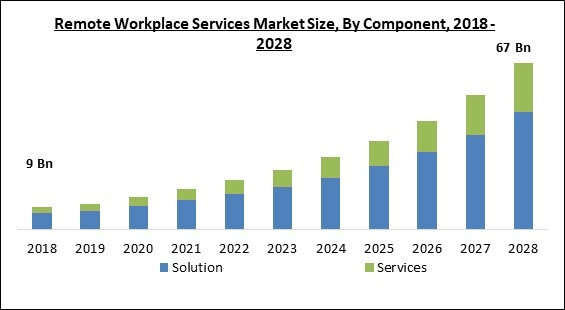
10. Remote Work Technologies and Tools
(Source: MarketsandMarkets)
The shift to remote work has created a growing demand for remote work software and tools. A report by MarketsandMarkets estimates that the remote work software market will grow at a compound annual growth rate (CAGR) of 12.7% from 2021 to 2026, reaching $12.9 billion in value.
The Percentage of Remote Job Opportunities
In this report, we will delve into the prevalence of remote work, investigate the factors driving this trend, and assess the implications for the future of employment.
11. Rapid Growth in Remote Job Opportunities
(Source: FlexJobs)
The trend towards remote work continues to grow, and with it, the availability of remote job opportunities. A FlexJobs report indicates an 81% increase in remote job postings between 2021 and 2024, highlighting the steady growth of remote work opportunities.
12. Remote Work Opportunities by Industry
(Source: Virtual Vocations)
The trend toward remote work has created a growing demand for remote job opportunities across various industries. According to a report by Virtual Vocations, the top industries for remote work opportunities in 2023 include healthcare, information technology, education, sales, and customer service.
13. Remote Job Opportunities for Full-Time Employees
(Source: Owl Labs)
The trend towards remote work has created diverse job opportunities, with some employees working full-time while others working part-time or freelance. A report by Owl Labs, the “State of Remote Work,” reveals that 71% of remote workers are full-time employees, while 29% work part-time or freelance.
14. Remote Work for Large Companies
(Source: FlexJobs, Global Workplace Analytics)
A study by FlexJobs and Global Workplace Analytics found that the number of remote job opportunities has grown more quickly in larger companies, with 40% more large companies offering remote work options in 2023 compared to 2020.
15. Remote Work Growth in Small and Medium-Sized Businesses (SMBs)
(Source: Salesforce)
Small and medium-sized businesses (SMBs) also embrace remote work, recognizing the benefits it can bring to their businesses and employees. A survey by Salesforce found that 68% of SMBs now offer remote work opportunities, reflecting a growing trend among smaller businesses.
16. Remote Work Opportunities for Senior-Level Professionals
(Source: Virtual Vocations)
A study by Virtual Vocations discovered that 20.3% of remote job opportunities in 2023 were for senior-level professionals, indicating a shift in remote work becoming more prevalent at higher levels of organizations.
17. Remote Work Opportunities in Developing Countries
(Source: World Bank)
Developing countries are also experiencing a growing demand for remote work opportunities as more and more organizations recognize the benefits of remote work. The World Bank reports that remote work has become more accessible in developing countries, with an estimated 54% increase in remote job opportunities since 2017.
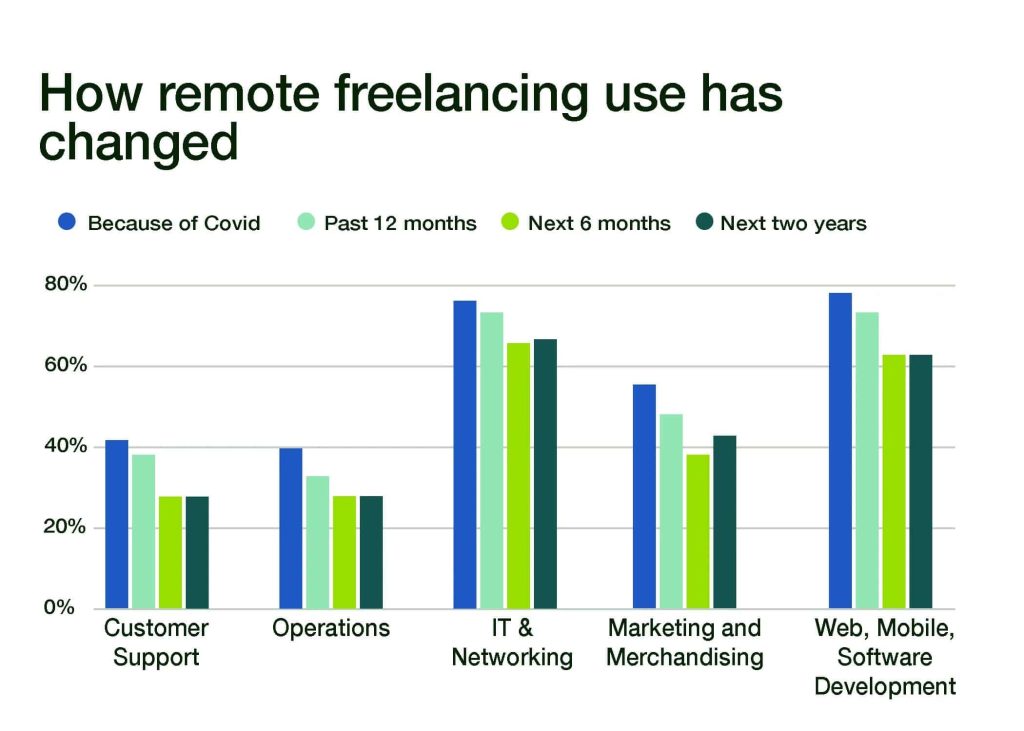
18. Remote Work and the Gig Economy
(Source: Freelancers Union, Upwork)
A study by the Freelancers Union and Upwork found that 59 million Americans, or 36% of the workforce, freelanced in 2023, with many opting for remote work opportunities The growth in freelancing can be attributed to several factors, including the increasing availability of remote work opportunities, the need for more flexible work arrangements.
19. Remote Work Opportunities for Disabled Workers
(Source: U.S. Bureau of Labor Statistics)
The U.S. Bureau of Labor Statistics reports that remote work has become more prevalent among disabled workers, increasing their labor force participation rate by 4.4% between 2020 and 2022.
20. Remote Work Opportunities for Parents
(Source: Werk)
A study by Werk found that 70% of working parents are interested in remote work opportunities, demonstrating the potential for remote work to support a better work-life balance for families.
Evaluating Productivity Levels of Remote Workers
In this report, we will explore the key strategies and tools that organizations can use to accurately measure the productivity of remote employees and foster a culture of continuous improvement and growth.
21. Increase in Remote Worker Productivity
(Source: Prodoscore)
With remote work becoming the new normal, organizations have been forced to adapt to the changing environment. A recent study by Prodoscore, a leading productivity measurement software company, has highlighted a significant increase in remote worker productivity in 2023, with a 47% rise compared to pre-pandemic levels.
22. Remote Work and Time Management
(Source: RescueTime)
The shift towards remote work has raised questions about the impact on employee productivity and work-life balance. A recent study conducted by RescueTime, a time management and productivity software company, discovered that remote workers experience 22 minutes more daily focused work time than their office-based counterparts.
23. Fewer Distractions for Remote Workers
(Source: FlexJobs)
According to a recent survey conducted by FlexJobs, a leading job search platform for flexible and remote work opportunities, 76% of remote workers reported experiencing fewer distractions and interruptions when working from home than in an office setting.
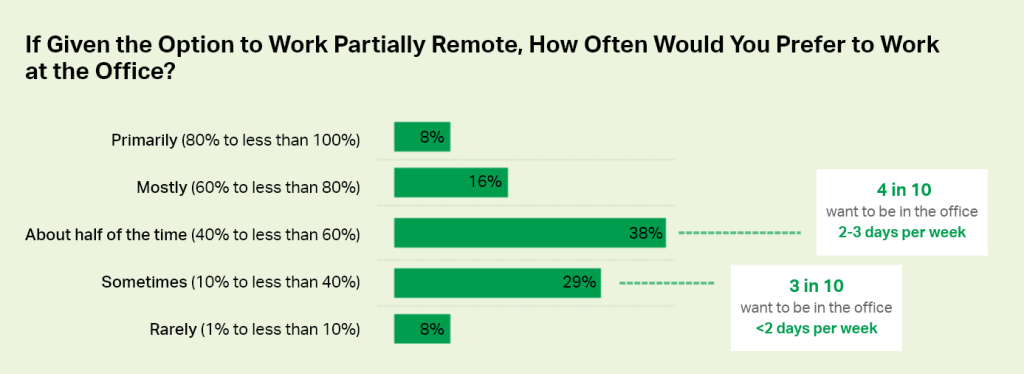
24. Remote Work and Employee Engagement
(Source: Gallup)
Gallup’s State of the Global Workplace report discovered that remote workers have a higher level of engagement, with 32% of remote workers being engaged compared to 28% of office workers.
25. Remote Work and Autonomy
(Source: Harvard Business Review)
The shift towards remote work has raised important questions about the ideal conditions for fostering productivity and employee well-being. A Harvard Business Review (HBR) study has revealed that remote workers who have autonomy over their work environment and schedule report higher levels of job satisfaction and productivity compared to those with less control.
26. Impact of Remote Work on Collaboration
(Source: McKinsey)
A report by McKinsey found that remote work can improve collaboration among team members, with 96% of remote workers reporting that collaboration was not negatively impacted by working remotely.
27. Remote Work and Work-Life Balance
(Source: Buffer)
A survey conducted by Buffer discovered that a staggering 91% of remote workers firmly believe that they experience a significantly improved work-life balance when working from the comfort of their own homes, as opposed to traditional office environments.
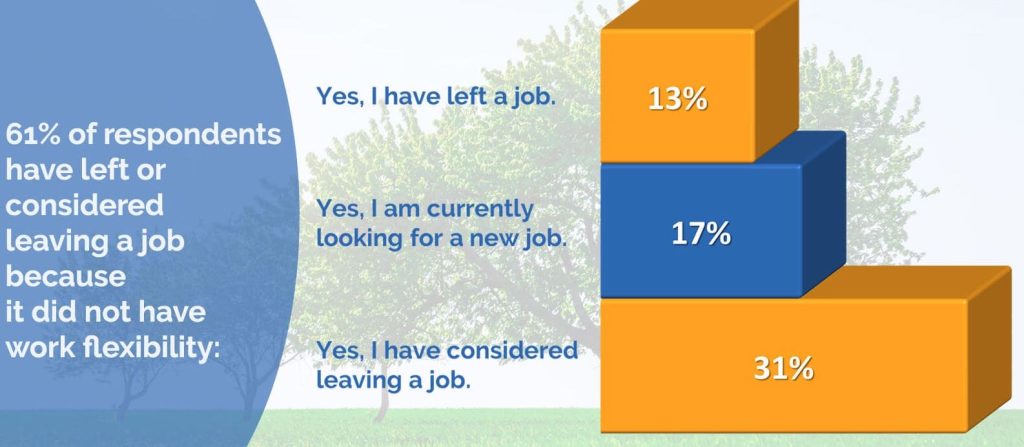
28. Remote Work and Reduced Stress Levels
(Source: FlexJobs)
A study conducted by FlexJobs discovered that an overwhelming 86% of remote employees experienced significantly reduced stress levels compared to their peers working in traditional office environments. This finding highlights the positive impact of telecommuting on employee well-being, as it fosters improved work-life balance, increased flexibility, and reduced commuting-related stress.
29. Remote Work and the Four-Day Workweek
(Source: Autonomy)
A study by Autonomy found that remote workers who transitioned to a four-day workweek experienced a 25% increase in productivity without reducing their overall working hours.
30. Remote Work and Performance Monitoring
(Source: PwC)
A report by PwC found that 78% of organizations have implemented or plan to implement tools to monitor remote worker productivity, ensuring that employees maintain high-performance levels while working remotely.
Reasons Behind Increased Productivity in Remote Workers
In this report, we will explore the key reasons behind increased productivity in remote workers and how organizations can leverage these insights to optimize their workforce for the future.
31. Flexible Scheduling and Productivity
(Source: FlexJobs)
A survey by FlexJobs revealed that 84% of remote workers felt more productive when they could choose their work hours, allowing them to work during their peak performance times.
32. Commute Time
(Source: Global Workplace Analytics)
Global Workplace Analytics discovered that by eliminating the daily commute, remote employees save an average of 11 days per year, which translates to valuable time that can be utilized for more productive work or personal pursuits.
33. Fewer Distractions and Interruptions
(Source: University of California, Irvine)
A study by the University of California, Irvine, found that office workers are interrupted every 11 minutes, while remote workers report fewer distractions, increasing productivity.
34. Improved Work-Life Balance
(Source: Buffer)
A survey conducted by Buffer revealed that a remarkable 91% of remote workers enjoy a superior work-life balance, which subsequently leads to enhanced productivity and greater job satisfaction.
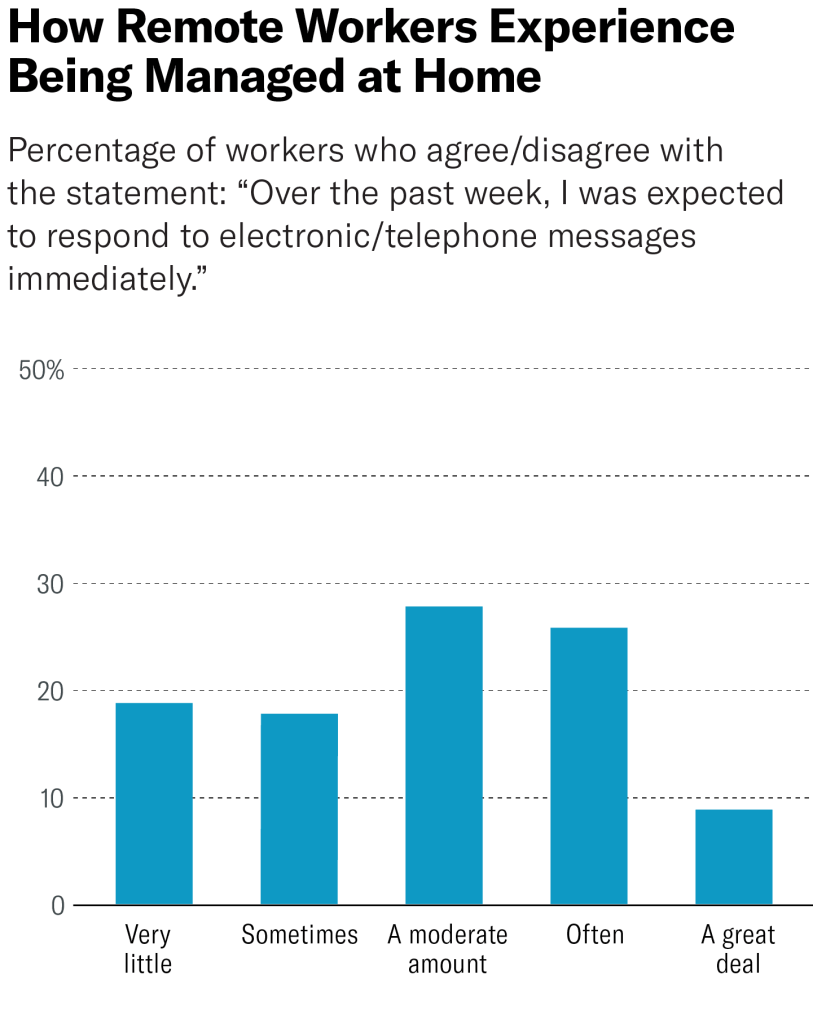
35. Autonomy and Empowerment
(Source: Harvard Business Review)
A study published in the Harvard Business Review found that remote employees with autonomy over their work environment and schedule exhibit higher levels of engagement and productivity.
36. Enhanced Employee Well-being
(Source: International Journal of Environmental Research and Public Health)
A study by the International Journal of Environmental Research and Public Health found that remote workers experience less stress and better mental well-being, increasing productivity.
37. Better Use of Technology
(Source: McKinsey)
A report by McKinsey & Company discovered that remote employees are more inclined to utilize digital tools and technology to boost their productivity and facilitate collaboration with colleagues.
38. Greater Focus on Results
(Source: Society for Human Resource Management)
A Society for Human Resource Management study found that remote work encourages a focus on results and outcomes rather than time spent in the office, promoting a more productive work environment.
39. Effective Time Management
(Source: RescueTime)
A study by RescueTime revealed that remote workers have 22 minutes more daily focused work time than office workers, demonstrating better time management skills.
40. Remote Work and Performance Monitoring
(Source: PwC)
A PwC report revealed that remote work promotes the implementation of performance monitoring tools, which play a crucial role in ensuring that employees maintain consistently high productivity levels.
Remote Work: Does It Boost Employee Happiness?
In this report, we will delve into the relationship between remote work and employee happiness, examining how the flexibility and autonomy provided by this new work model enhance overall job satisfaction and create a more engaged and motivated workforce.
41. Global Workplace Analytics
(Source: Global Workplace Analytics)
Global Workplace Analytics estimates that businesses can save an average of $11,000 per year for each employee that works remotely part-time due to reduced overhead costs such as office space and utilities.
42. Improved Employee Retention
(Source: Owl Labs)
A study by Owl Labs found that companies that offer remote work options have a 25% lower employee turnover rate than those that don’t, resulting in cost savings and reduced recruitment efforts.
43. Access to a Wider Talent Pool
(Source: Society for Human Resource Management)
A study by the SHRM determined that remote work enables employers to tap into a global talent pool, significantly increasing their chances of finding the best candidates for job openings.
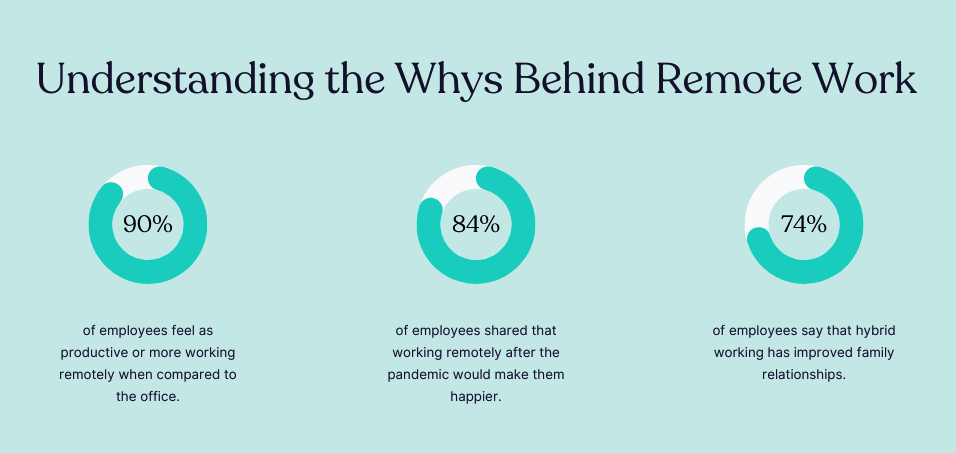
44. Increased Productivity
(Source: Prodoscore)
Prodoscore’s study unveiled that remote worker productivity experienced a substantial increase of 47% in 2023 compared to pre-pandemic levels, substantially contributing to high overall business performance.
45. Enhanced Employee Satisfaction
(Source: Buffer)
A survey by Buffer discovered that 90% of remote workers would recommend remote work to a friend, indicating higher levels of job satisfaction among remote employees.
46. Better Work-Life Balance for Employees
(Source: International Journal of Environmental Research and Public Health)
A study by the International Journal of Environmental Research and Public Health found that remote workers experience better work-life balance, which can result in higher employee morale and engagement.
47. Flexibility and Scalability
(Source: Deloitte)
A report by Deloitte revealed that remote work allows businesses to be more flexible and scalable, adjusting their workforce size and structure as needed without incurring additional costs.
48. Reduced Environmental Impact
(Source: FlexJobs, Global Workplace Analytics)
FlexJobs and Global Workplace Analytics found that remote work can help companies reduce their carbon footprint by decreasing the need for office space, energy consumption, and daily commuting.
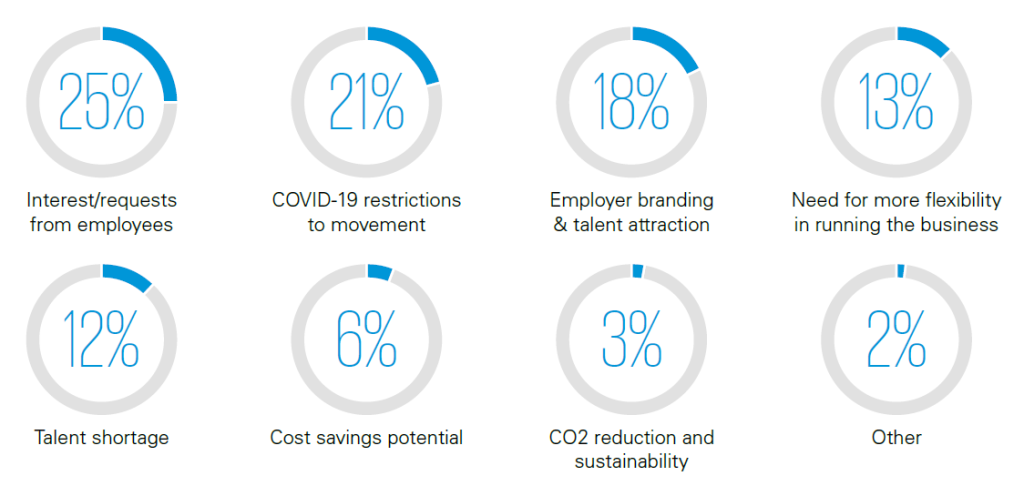
49. Competitive Advantage in Attracting Talent
(Source: PwC)
A PwC survey found that 72% of workers would choose a job that offers flexible work arrangements over one that does not, making remote work a competitive advantage for employers in attracting top talent.
50. Encourages Innovation and Collaboration
(Source: McKinsey)
A McKinsey report highlighted that remote work could promote innovation and collaboration by connecting employees with diverse perspectives and expertise, fostering a more dynamic work environment.
How can EPC Group help you with Microsoft Teams for Remote Working?
EPC Group is a leading provider of remote work solutions that empower businesses to enhance connectivity, collaboration, and productivity in a remote work environment. By partnering with us, companies can leverage various tools and services to streamline their transition to remote work and optimize their existing remote work infrastructure.
Our experienced team of consultants will work closely with your organization to assess your unique remote work needs and recommend the most suitable tools and strategies to improve connectivity and collaboration among your remote workforce.
Keep the challenges of remote work from holding your business back. Experience the benefits of improved employee satisfaction, increased productivity, and a more flexible, scalable workforce.
Contact us today to learn more about how we can help you embrace the future of work and unlock the full potential of your remote team.
Sources
upwork flexjobs buffer owllabs gartner flexjobs alliancevirtualoffices pwc malwarebytes Stanford globalworkplaceanalytics flexjobs flexjobs networkworld buffer owllabs quantumworkplace flexjobs buffer gartner bls owllabs goodhire owllabs mckinsey buffer globalworkplaceanalytics businessinsider forbes fundera cbre quantumworkplace marketwatch flexjobs hbr weworkremotely globalworkplaceanalytics globalworkplaceanalytics benefitspro wbur marketingassets owllabs crainsnewyork amazonaws flexjobs
Also read















